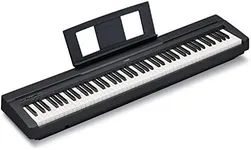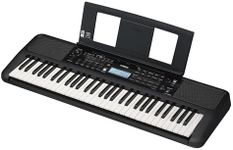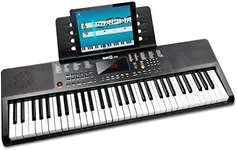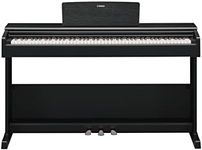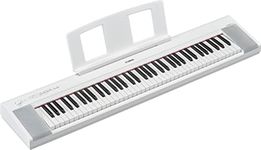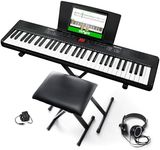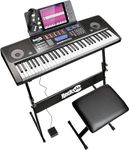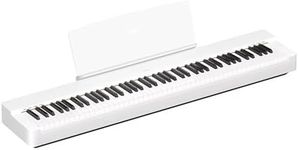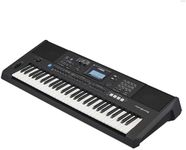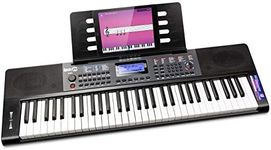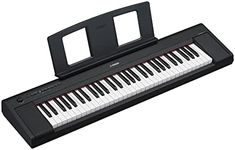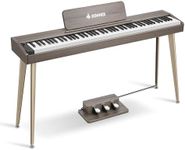Buying Guide for the Best Keyboard For Beginners
Choosing the right keyboard as a beginner can significantly enhance your typing experience and productivity. It's important to consider what you'll primarily use the keyboard for, such as typing, gaming, or general use, as this will guide you in selecting the right features. Understanding the key specifications will help you make an informed decision that suits your needs and preferences.Keyboard TypeKeyboards come in various types, such as membrane, mechanical, and chiclet. Membrane keyboards are generally quieter and more affordable, making them a good choice for general use. Mechanical keyboards offer tactile feedback and durability, preferred by gamers and heavy typists. Chiclet keyboards, often found in laptops, have flat keys and are compact. Consider what you'll be using the keyboard for and choose a type that aligns with your needs. If you type a lot, a mechanical keyboard might be worth the investment, while a membrane keyboard is suitable for casual use.
Key SwitchesKey switches determine the feel and sound of a keyboard. Mechanical keyboards have different types of switches, such as linear, tactile, and clicky. Linear switches provide smooth keystrokes, tactile switches offer a noticeable bump, and clicky switches give an audible click. If you prefer a quiet typing experience, linear switches are ideal. For feedback without noise, tactile switches are a good choice. Clicky switches are great if you enjoy the sound and feel of typing. Consider your environment and personal preference when choosing key switches.
Layout and SizeKeyboards come in various layouts and sizes, including full-size, tenkeyless (TKL), and compact. A full-size keyboard includes a number pad, which is useful for data entry. TKL keyboards omit the number pad, saving space and offering a more ergonomic setup. Compact keyboards are even smaller, often lacking function keys. If desk space is limited or you travel frequently, a TKL or compact keyboard might be more suitable. For extensive data entry, a full-size keyboard is recommended.
ConnectivityKeyboards can be wired or wireless. Wired keyboards offer a stable connection and are often preferred for gaming to avoid input lag. Wireless keyboards provide more flexibility and a cleaner setup, ideal for general use and portability. Consider how you plan to use the keyboard and whether you prioritize a clutter-free desk or a stable connection. If you move around a lot or dislike cables, a wireless keyboard is a good choice. For gaming or stationary use, a wired keyboard might be better.
BacklightingBacklighting can enhance the aesthetics of a keyboard and improve visibility in low-light conditions. Keyboards may offer single-color backlighting or RGB lighting, which allows for customizable colors and effects. If you often work in dim environments, backlighting can be beneficial. RGB lighting is popular among gamers and those who enjoy personalizing their setup. If aesthetics and visibility are important to you, consider a keyboard with backlighting. Otherwise, a non-backlit keyboard is perfectly functional for well-lit environments.
ErgonomicsErgonomic keyboards are designed to reduce strain and improve comfort during extended use. They may feature split designs, adjustable heights, or wrist rests. If you spend long hours typing, an ergonomic keyboard can help prevent discomfort and repetitive strain injuries. Consider your typing habits and any existing discomfort when choosing a keyboard. If comfort is a priority, look for ergonomic features that suit your needs. For occasional use, a standard keyboard may suffice.
